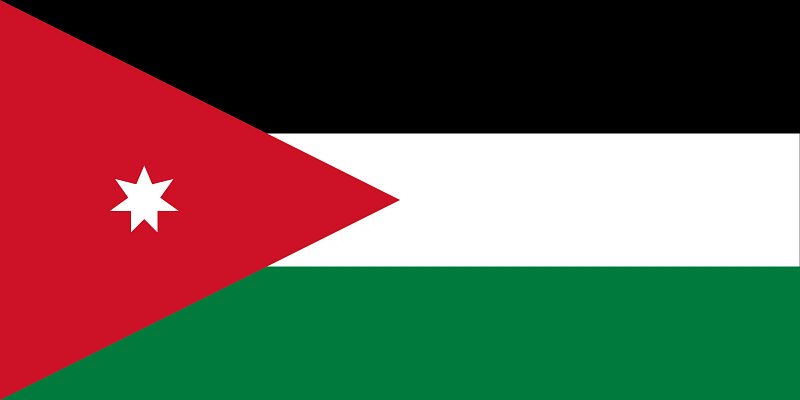This travel wiki page of Jordan will help guide travelers with quick and relevant information to consider when planning and visiting the country. It is difficult to find all the relevant information on Jordan’s culture, safety, travel restrictions, and things to do, so we summarize it all here. If anything is stale or outdated, please let us know! Let’s dive in and explore more high-level information as a Jordan trip planner.
Last updated January 9th of 2024.
Table of contents
National Information & Culture
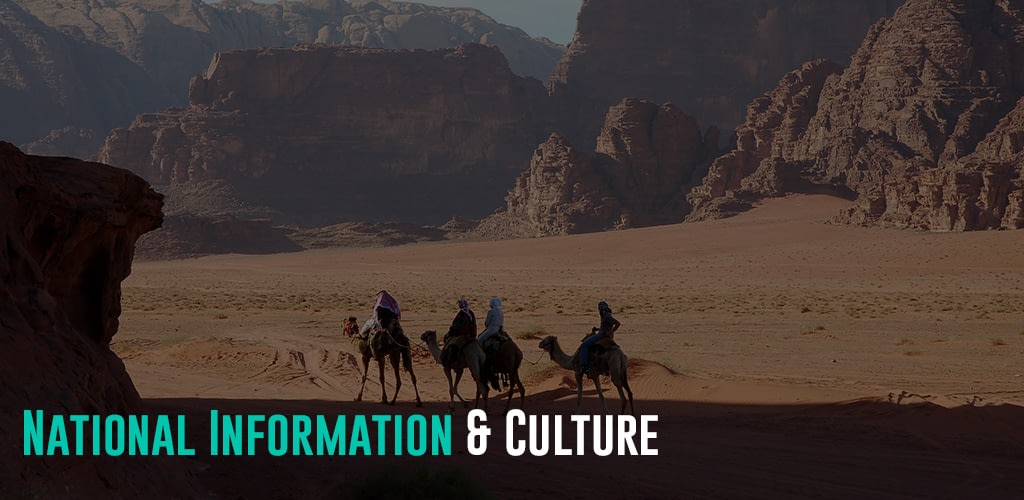
Jordan, officially the Hashemite Kingdom of Jordan, is a West Asian country on the East Bank of the Jordan River, at the crossroads of Asia, Africa, and Europe within the Levant region. Jordan shares land borders with Saudi Arabia, Iraq, Syria, the Palestinian West Bank, and Israel. The Dead Sea is along its western border with Israel, while the Gulf of Aqaba’s Red Sea in the southwest separates Jordan from Egypt. Amman is Jordan’s capital, largest city, and economic, political, and cultural center. Meanwhile, the country’s official currency is the Jordanian Dinar (JOD).
Jordan has been inhabited since the Paleolithic period. At the end of the Bronze Age, three kingdoms emerged: Ammon, Moab, and Edom. It witnessed rule by various empires, including the Arab Nabataeans, which established its capital at Petra in the 3rd century BC. Later rulers include the Assyrians, Babylonians, Romans, Byzantines, Rashiduns, Umayyads, Abassids, and Ottomans.
Today, Jordan has served as a haven for refugees since 1948, hosting 2.1 million Palestinians, 1.4 million Syrians, and thousands of Christian Iraqi refugees. Despite the strain on resources, the country is committed to accepting refugees. Jordan has a high Human Development Index but faces economic challenges due to a lack of natural resources, an influx of refugees, and regional instability. Nonetheless, its attractive economy, skilled workforce, and tourism sector contribute to its resilience.
Visit Jordan’s official tourism website for more information when planning your trip.
Typical Jordanian Culture
Jordan is predominantly Sunni Muslim – a conservative country and modest clothing is appreciated. Also, be mindful of fasting practices. Avoid eating or drinking in public during daylight during the holy month of Ramadan. Also, public displays of affection should be kept to a minimum.
When taking taxis, Jordanian women usually avoid the front seat. It is a practice advisable for foreign women as well. Notably, locals shuffle themselves around to ensure that men sit next to males and women next to females. Hence, foreign visitors should ideally not sit beside a Jordanian of another gender on any bus or public transport.
Lastly, use your right hand for giving and receiving, as the left hand is traditionally considered unclean.
Special Travel Considerations
Each country and destination has rules and regulations that every traveler must consider. Hence, check the following considerations for hassle-free travel to Jordan.
Covid-19 Policy
Travelers to Jordan do not need to undergo pre-departure PCR tests or PCR tests upon arrival. But as the COVID-19 protocol may vary over time, check for the latest update related to the coronavirus when planning your trip to Jordan.
Travel Insurance
Travel and health insurance are mandatory for visitors to Jordan. The coverage must include emergency medical treatment, including Covid-19, repatriation, and evacuation. Travel insurance can protect you against the inconvenience of injury, medical emergencies, theft, and flight cancellations. In addition, it is a comprehensive protection in case anything goes wrong with your trip.
Visa Information

Travelers from 11 visa-exempt countries and territories can enter Jordan and stay from 30 to 90 days on a 6-month period. Additionally, nationals from 120 countries are eligible for a visa on arrival or electronic visa to Jordan and stay up to 30 days, subject to fees. Meanwhile, visitors from 56 restricted countries must apply for pertinent electronic or visit visas or visit the nearest embassy and diplomatic missions.
Aside from a visa, all visitors must have a passport valid for six months beyond the intended stay. An onward or return ticket is also an additional requirement.
Popular Attractions
Jordan is an Arab nation renowned for its ancient monuments, nature reserves, and seaside resorts. It continues to enthrall the new generation with its eclectic mix of modernity and tradition, from the enchanting starkness of rivers, valleys, and canyons to the Amman city center and the majestic ruins of civilizations once forgotten. Jordan is home to countless wonders that will surely leave travelers in awe.
Petra
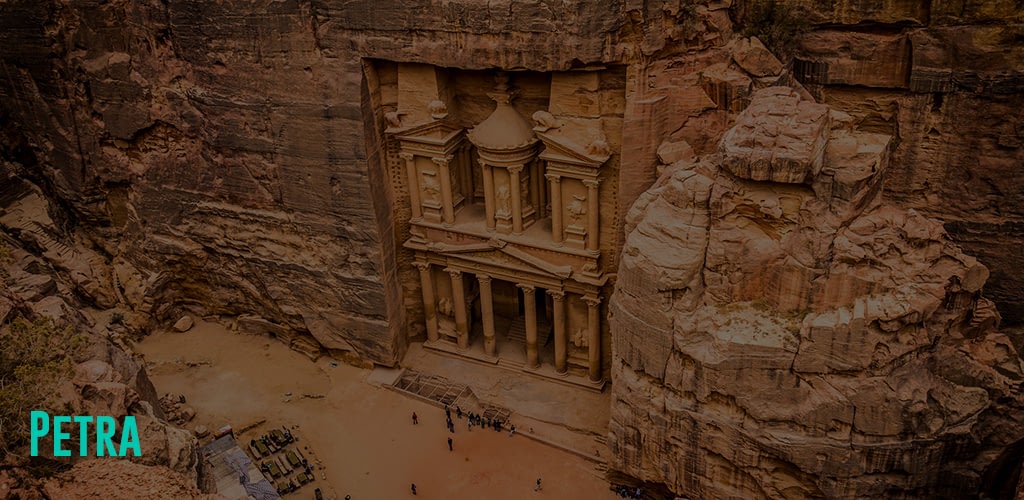
Petra, an ancient city in Jordan’s southwestern desert, is a national treasure and a renowned tourist attraction. Dating back to 300 BC, Petra showcases refined culture, massive architecture, and an ingenious water system. Also known as “Rose City,” Petra features tombs, temples, and monuments carved into pink sandstone cliffs.
Petra is a testament to Jordan’s rich history, a hub for ancient civilizations such as the Nabateans, Edomites, and Romans. Highlights include the mysterious Djinn Blocks, the iconic Siq with historic water channels, and the enchanting Treasury (Al-Khazneh), the final resting place of Nabatean King Aretas IV. Beyond the Siq and the Treasury, Petra reveals a wealth of attractions. Explore the Petra Museum and Street of Facades. Ascend the High Place of Sacrifice for panoramic views, and marvel at the Theater and Colonnaded Street. The adventurous can climb the 850 rock-cut steps to reach the legendary monastery. Petra’s allure extends into the night with the Petra By Night show, illuminating the Siq and the Treasury with over 1,500 flickering candles.
Hidden for centuries, Petra gained global recognition as one of the New7Wonders of the World and a UNESCO World Heritage site. Visitors must plan to explore the 800-plus registered sites for at least two days. Check out the Visit Petra portal for more details when planning your trip. Travelers can also check out the Virtual Tour courtesy of the Jordan Tourism Board.
The Trails in Petra
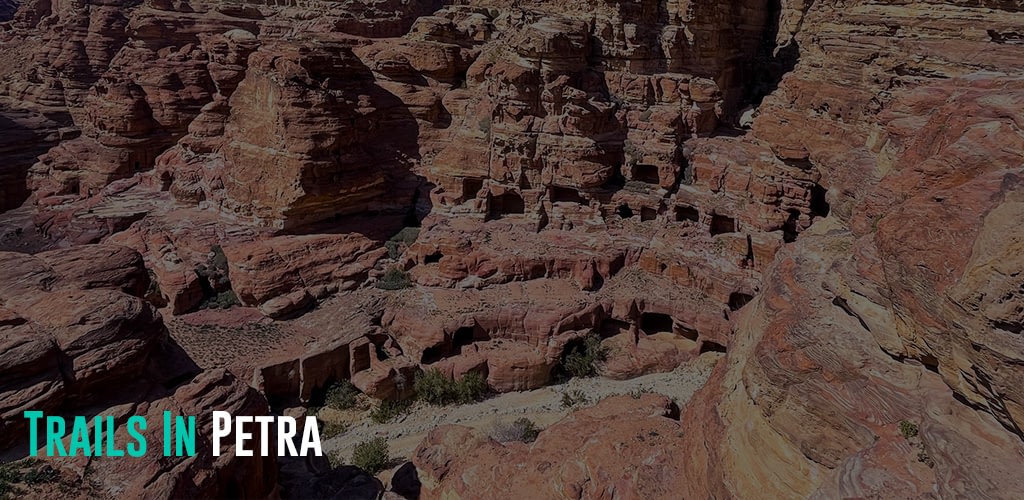
Petra offers numerous trails to explore, starting from the visitors’ center. The Main Trail, Al-Siq to Treasury, is the most visited and can last up to an hour. It passes through Royal Tombs and Colonnaded Street and ends by Qasr Al-Bint.
The Ad-Deir main trail begins from the museum at the end of the Main Trail. It leads visitors northward, reaching the Lion Triclinium, moving to the hermitage with chambers adorned with carved crosses, and ending up at the Ad-Deir.
Meanwhile, the Ad-Deir Back Route Trail begins at Kharrubat al-Fajja and ends at Ad-Deir in 4 to 5 hours. This trail showcases the mountain view landscape overlooking Wadi Araba and passes through an agricultural area.
Embarking on the Beidha trail starts from Umm Qussa and concludes at Slaysel for 2.5 to 3 hours. The trail leads to the ancient Nabatean water cistern of Bir al-Arayis and passes through Siq al-Barid for Petra’s stunning mural paintings. The path also leads to the Neolithic Village of Beidha, Wadi Slaysel, until reaching Slaysel.
The Al-Khubtha takes travelers into the ancient city of Petra through the Siq, passing some magnificent monuments. It includes the theater carved out of the rock and the royal tombs, such as the Urn Tomb, Silk Tomb, Corinthian Tomb, and Palace Tomb, before reaching Al-Khubtha High Palace and Cistern. The trail takes around 4 to 5 hours, depending on the pace.
Lastly, the Ad-Deir to Kharubat Al-Fajjah trail follows the route of the Main Trail to Qasr Al-Bint, climbing to the Monastery and passing the Lion Triclinium on the way up to Ad-Deir. The trail then takes travelers past the viewpoint to Umm Sysaban to see the remains of an ancient walled settlement. Ending at Kharrubat al-Fajjah, the trail takes around 8 hours to finish.
Wadi Rum
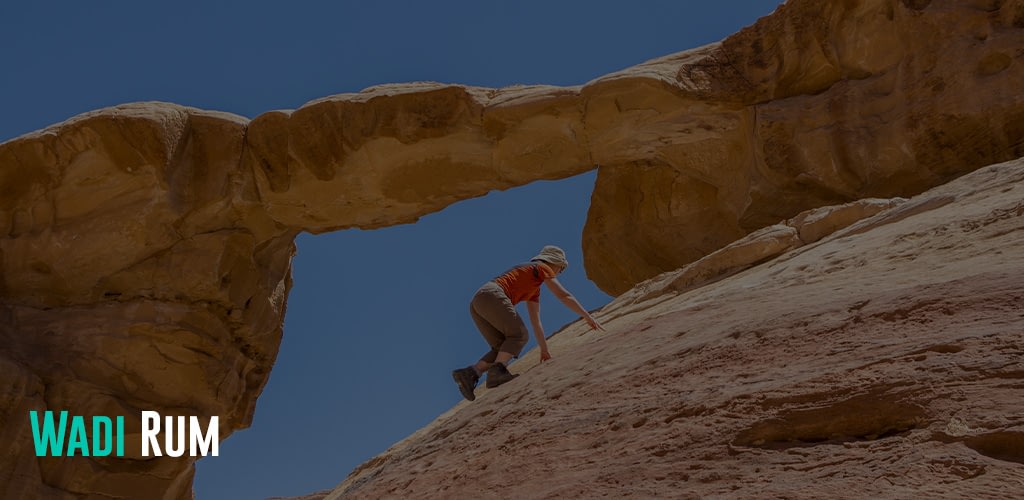
Wadi Rum in southern Jordan is a protected desert wilderness spanning 74,000 hectares and boasts captivating Mars-like landscapes. The area features narrow canyons, sandstone mountains, high cliffs, and natural caverns. Highlights are the Burdah Rock Bridge and ancient petroglyphs from the 8th century BC in the caverns of Khazali Canyon. Lawrence’s Spring also adds allure.
Adventure enthusiasts can enjoy ecotourism activities, including camel and horse rides, rock climbing, ATV tours, and hot-air balloons. Wadi Rum also attracts travelers seeking tranquility with activities like guided climbs and overnight camping with Bedouin guides. Tourists can choose tent accommodations or experience sleeping under the open sky, surrounded by the dramatic colors of the changing desert sky.
Also known as the Valley of the Moon, Wadi Rum is a breathtaking desert valley with UNESCO World Heritage Site status.
Dead Sea

The Dead Sea, located 427 meters below sea level, is a unique blend of wellness and religious tourism. With its super salty water, rich in magnesium, sodium, potassium, bromine, and more, the Dead Sea has attracted visitors since ancient times. The hyper-saline water allows people to float effortlessly, and the mineral-rich mud is used for natural healing. The Dead Sea has historical and religious significance, including the alleged site of Jesus’s baptism.
Visiting the Dead Sea is a quintessential Jordanian experience, with its intense aquamarine waters and salt-encrusted rock ledges. Wellness devotees value the mineral-rich water for its healing properties, and luxury spa resorts along the northeast coast offer private wading areas with Dead Sea mud treatments. However, caution is advised to avoid getting Dead Sea water in the eyes due to its intense salinity.
Near the Dead Sea, visitors can explore the wonders of Hammamat Ma’in, renowned for its mineral-rich hyper-thermal waterfalls originating from winter rainfalls in the Jordanian highlands. Another must-visit is Al-Maghtas, the Baptism Site of Jesus of Nazareth, located nine kilometers north of the Dead Sea. This UNESCO World Heritage site offers a peaceful path through Dead Sea vegetation to where Jesus was baptized, featuring structures from the Roman and Byzantine empires. Additionally, The Lowest Point on Earth Museum & Lot’s Cave near the Dead Sea provides a unique experience with artifacts, including Graeco-Roman clothing and hundreds of Greek inscriptions. The walk to Lot’s Cave, believed to be the refuge of Prophet Lot, is recommended, showcasing an intricate mosaic floor from its transformation into a church.
Jerash
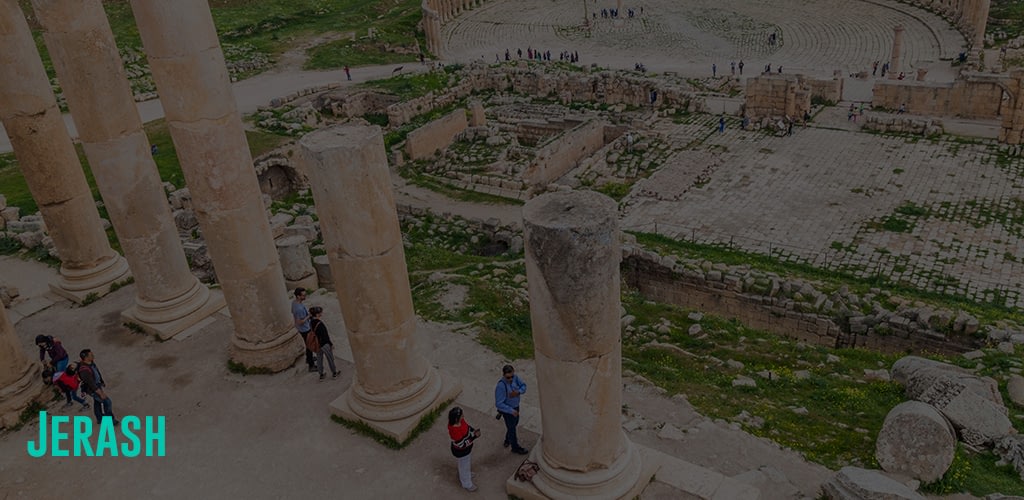
Jerash, a close second to Petra as a favorite destination in Jordan, boasts a rich history dating back over 6,500 years and is located approximately 45 km north of Amman. Its golden age under Roman rule, known as Gerasa, has left it one of the best-preserved Roman provincial towns globally. Visitors can explore its grand urbanism, featuring paved streets, arcades, temples, theaters, public squares, and city walls. It reflects a fusion of Graeco-Roman and Arab Orient cultures.
Jerash Archaeological City was hidden for centuries in the sand before being excavated and restored over the past 70 years. Today, archaeology enthusiasts can visit the Jerash Visitors’ Center and explore key sites like the South Theater, North Theater, Nymphaeum, Cathedral, Colonnaded Street, Oval Plaza, Hippodrome, and Hadrian’s Arch. The Forum, Temple of Zeus, and panoramic views from the Temple of Zeus are highlights, offering a glimpse into the city’s splendor. Jerash is also known for its olive trees, and travelers can partake in an olive harvest experience in September or October. Guided tours are recommended to fully appreciate the extensive ruins, making it a must-visit for history lovers.
Dana Biosphere Reserve

The Dana Biosphere Reserve is Jordan’s largest nature reserve since 1989. It spans 308 square kilometers and is situated in south-central Jordan around Dana village and Wadi Dana. It is characterized by natural beauty, historical significance, and remarkable biodiversity, encompassing four distinct bio-geographical zones: Mediterranean, Irano-Turanian, Saharo-Arabian, and Sudanian. This diversity makes it a unique melting pot of species from Europe, Africa, and Asia, with 800 plant species and 449 animal species recorded, including 25 endangered species like the Sand Cat, Syrian Wolf, Lesser Kestrel, and Spiny Tailed Lizard. Moreover, the reserve’s geology transitions from sandstone to limestone granite, and its ecosystem ranges from oak and juniper woodlands to sandy deserts.
The biosphere reserve offers more than just natural beauty; it’s a haven for hiking and walking, with campsites organizing activities such as cycling trails, cooking classes, stargazing, and bird watching. For a more profound experience, the dilapidated Dana Village, perched on a cliff, provides a charming stay with partially reconstructed houses dating back to Ottoman times. Beyond its natural wonders, the Dana Biosphere Reserve invites visitors to explore its cultural and historical facets, featuring archaeological sites like Shobak Castle and Umm al-Jimal Village with Nabataean ruins dating back to Roman times.
Today, Dana Biosphere Reserve is on the tentative list of UNESCO.
Aqaba
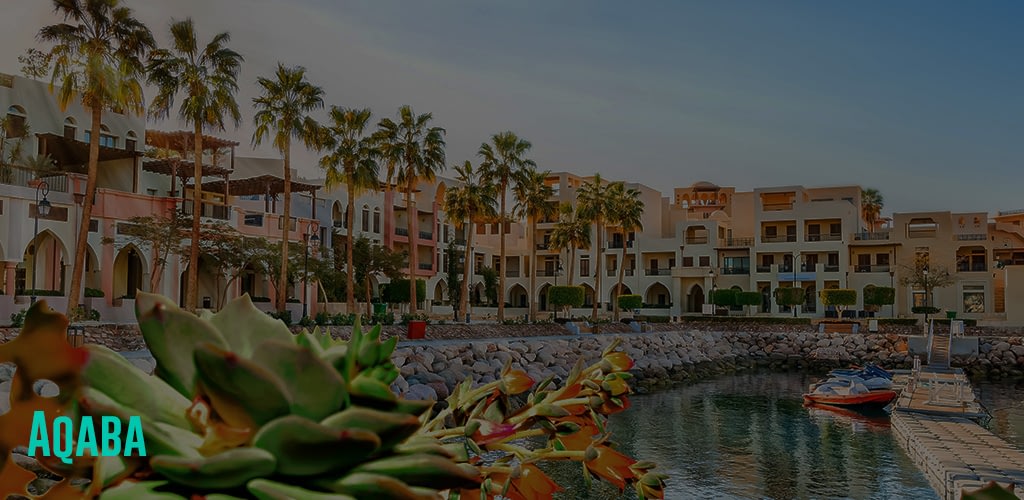
Aqaba, a historic port city on the Red Sea’s Gulf of Aqaba, boasts a rich cultural and recreational appeal. With a history dating back to 4000 BC, it features the Islamic-era Aqaba Fort and offers a delightful blend of local charm, water sports, and historical landmarks.
Situated on the southern tip of Jordan, Aqaba is a beach town that complements the metropolitan allure of Amman. The city offers respite from the desert heat with its turquoise waters, and visitors can unwind at top-class hotels, beaches, and hammams. Visitors can explore coral reefs, indulge in deep-sea diving and snorkeling, go sightseeing cruises, and enjoy various water sports.
Aqaba’s strategic location on the Gulf of Aqaba has made it an essential port for thousands of years. Historical sites such as the 16th-century Aqaba Fort, the Sheik Zayed Mosque, and the ancient Aqaba Church provide glimpses into the city’s past. The Aqaba Church, considered the world’s first purpose-built Christian church, dates back to around 300 AD.
Amman
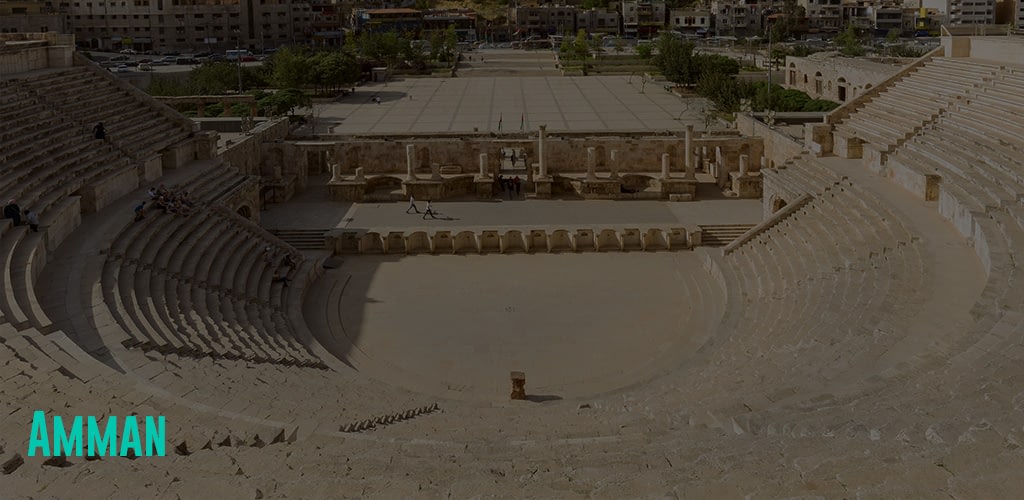
Amman, the capital of Jordan, is a captivating blend of old and new, nestled on hilly terrain between the desert and the Jordan Valley. The city’s diverse neighborhoods range from bustling downtown markets to the Jabal Al Lweibdeh art galleries and Abdali’s modern shopping district.
The Citadel, situated atop Jabal al-Qala’a hill, provides a glimpse into Amman’s evolution. Notable sites include the 8th-century Umayyad Palace complex, the Temple of Hercules, and the Nymphaeum, a Roman fountain. The restored Roman Theater, a 2nd-century stone amphitheater that seats 6,000, is still used for performances today.
Beyond historical landmarks, Amman offers vibrant neighborhoods, such as Rainbow Street, lined with rooftop restaurants and trendy shops. Souk Mango, an open-air marketplace, beckons with Jordanian crafts.
For a deeper dive into Jordan’s history, the Jordan Museum is recommended, and visitors can engage in cultural experiences like cooking lessons at Beit Sitti or olive oil-soap-making workshops at Mosaic House. With its modernity seamlessly intertwined with ancient culture, Amman stands as Jordan’s dynamic heartbeat, inviting travelers to explore its rich history and diverse neighborhoods.
Mount Nebo
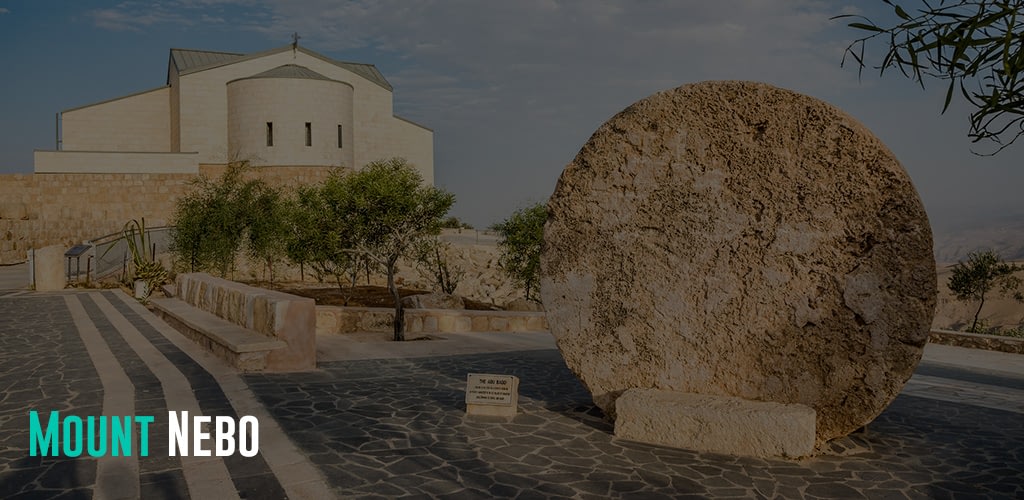
Mount Nebo, standing approximately 700 meters above sea level, has been a famous pilgrimage destination since Christianity. It holds cultural, spiritual, and biblical significance as the place where Moses, according to the Bible, glimpsed the Promised Land before his death. This sacred location, mentioned in the book of Numbers and prophecies of Isaiah and Jeremiah, also marks where Moses was laid to rest, though the exact burial site remains unknown.
While its religious significance attracts pilgrims, Mount Nebo also stands out for its picturesque surroundings, overlooking scenic valleys. The nearby dramatic hilltop fortress, Mukawir (Machaerus), adds to the region’s allure. Mount Nebo is the crown jewel of biblical sites in Jordan, showcasing well-preserved mosaics from the 6th century, a Serpentine Cross, and the Moses Memorial Church. Visitors can explore the Memorial Viewpoint, offering views of the Dead Sea and Jerusalem, and enjoy a picnic at a secluded downhill for a more private experience with similar vistas.
Wadi Mujib

Wadi Mujib, also known as Arnon Stream, is a river in Jordan that empties into the Dead Sea, creating the Mujib Biosphere Reserve, the world’s lowest natural reserve. Known as ‘Jordan’s Grand Canyon,’ Wadi Mujib features rugged gorges, steep valleys, and hidden pathways, running approximately 70 kilometers to the Dead Sea. Cutting through the desert, this enormous canyon reaches depths of over a thousand meters.
Moreover, the deep Wadi Mujib gorge water flow from seven tributaries showcases remarkable biodiversity. The reserve hosts over 300 plant species, ten carnivore species, and diverse bird species, including rare mountain animals like the horned ibex. While the Al Mujib Dam controls the river’s flow, Wadi Mujib has been a boundary line since Biblical times, and the King’s Highway traverses part of it.
Wadi Mujib is a must-visit for adventure-seekers and nature lovers. Travelers can explore the vast wilderness, witness dramatic formations, and enjoy outdoor activities. Visiting the Mujib Biosphere Reserve offers a rappel down to the rushing waters and a chance to spot various animals. The reserve also provides exhilarating activities such as hiking, rock climbing, zip-lining, and wildlife watching, including Nubian ibex, striped hyenas, and Egyptian vultures.
Madaba

Madaba, located southwest of Amman, is an ancient town renowned for its rich history and mosaic artistry. Known as the “City of Mosaics,” it is a cultural hub for Byzantine and Umayyad mosaics. The city features a plethora of mosaics, many situated on the floors of churches and buildings. St. George’s Church houses the Madaba Mosaic Map, a 6th-century depiction of the Holy Land during the Byzantine period.
Madaba’s archaeological parks offer more mosaic treasures. Archaeological Park I includes a geometric mosaic from the 6th-century Church of the Virgin Mary and the oldest Jordanian mosaic dating back to the 1st century BC. Archaeological Park II, set in the ruins of a luxurious mansion, showcases additional impressive mosaics. The city’s millennia-old mosaic art adorns numerous houses and churches, with notable sites like Umm ar-Rasas and the Church of the Apostles.
The city is part of the historic Jordan landscape, characterized by its gold-gilded mosque and tall minarets. Madaba offers a blend of spirituality, ancient mosaics, Byzantine artwork, and remnants of the Roman town, a must-visit destination for history and art enthusiasts.
Primary Spoken Language(s)
Arabic is the official language in Jordan. English is also widely spoken, especially in urban areas. Additionally, many Jordanians are fluent in French, German, Italian, and Spanish languages, although to a lesser extent.
Safety Concerns
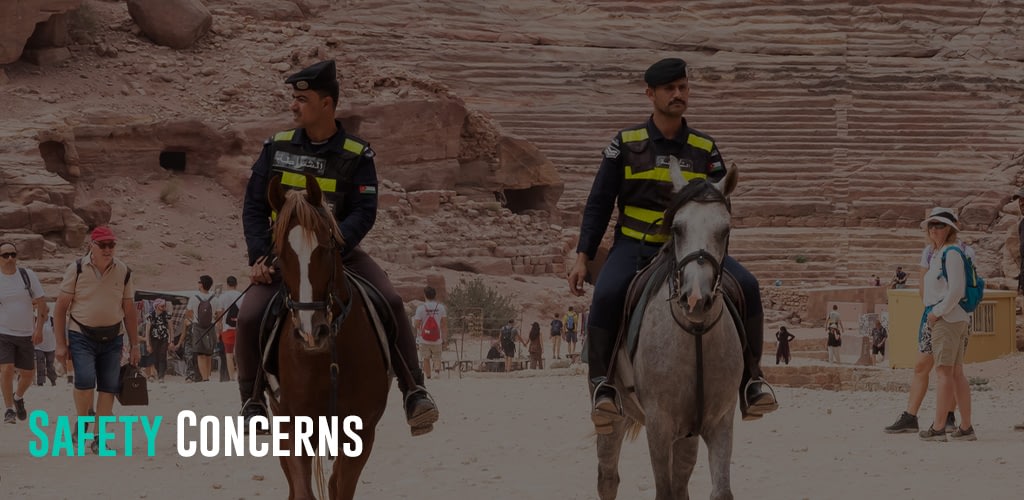
Jordan ranks 62nd out of 162 countries on the 2023 Global Peace Index. Also, Jordan has a Level 2 Travel Advisory from the US Department of State. Hence, travelers in Jordan can take safety precautions when exploring the country.
Due to the increasing tension and conflicts in its neighboring countries, Jordan has been a target of terrorism. However, Jordanian authorities have increased its visibility and have stopped terrorist plots in recent years. Also, crimes have been decreasing. But just like in other crowded areas, beware of petty thefts like pickpockets and bag snatchers in the narrow streets of Amman’s city center. Keep an eye on your belongings in tourist places and exercise vigilance when leaving ATMs. Stay away from protests and demonstrations. Always lock doors and do not leave valuables in rented cars. Lastly, avoid the borders with Syria and Iraq, as well as refugee camps.
For emergencies, dial the 911 hotline number for police and medical assistance.
Natural Hazard
Certain areas of Jordan, including Petra, the Dead Sea, and other tourist areas, are prone to heavy rain and flash flooding. These usually occur during the rainy season from October to March. Flooding also occurs throughout Amman at the first rains of the season. Roads and bridges may become impassable, and the Jordanian government may completely close tourist areas. Hence, watch the weather reports and heed local recommendations. Travelers can also visit the Jordan Meteorological Department portal for weather forecasts and alerts.
Budget Considerations
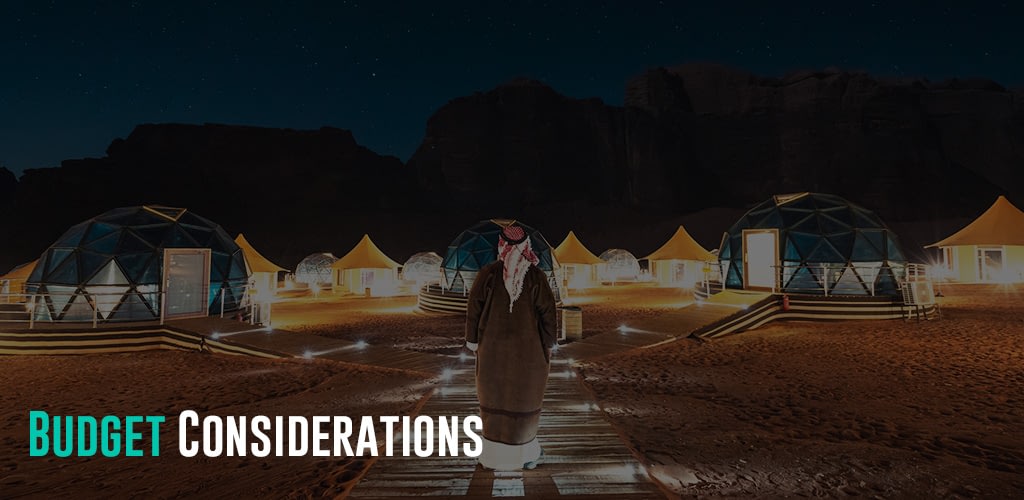
Jordan is not a budget-friendly destination. But there are ways to explore the otherworldly landscapes and experience the natural beauty firsthand without breaking the bank.
Accommodation
The accommodation cost in Jordan varies mainly according to location and proximity to the city center. For example, travelers can find a hostel dorm in Amman for as low as $10, while the cheapest in Petra is $14. For privacy, travelers can get a private hostel room for $20. Free wifi is standard, some offer complimentary breakfast, and most have shared kitchen facilities. Travelers can also find budget hotels in Jordan for as low as $30, including breakfast. Depending on location and amenities, visitors can enjoy the comfort of a three-star hotel for $60 or splash out on five-star hotels for $130.
Food
A typical Jordanian cuisine comprises lamb, chicken, goat, potatoes, bulgur, and rice. Za’atar, a Middle Eastern spice, is also typical of Jordanian dishes. Traditional meals include mansaf, shawarma, falafel, zarb, kibbeh, labneh, tabbouleh, and hummus. Other staple dishes are baba ghanoush, warak enab, olives, and pickles. As one of the world’s largest producers of olives, olive oil is the primary cooking oil in Jordan.
Dining out in Jordan is inexpensive. Numerous street foods and local eateries sell to-go meals, like fresh falafel and shawarma, between $1.40 and $4.20. Travelers can also have fast food combo meals for $7 and shawarma plates or falafel sandwiches for $7 to $10 from casual cafes. Meanwhile, a traditional Jordanian meal in a casual restaurant costs $14 to $20.
Expect to spend an average of $50 weekly on groceries for travelers who want to cook their food. The budget can include basic staples like rice, pasta, vegetables, and some meat.
Attractions and Transportation
While accommodation and food in Jordan are affordable, entrance fees to primary attractions are relatively high. One-day admission ticket to Petra costs $70.50, $77.50 for two days, and $84.60 for a three-day ticket. But travelers can avail of the Jordan Pass from $99 to $113 for significant savings. The pass allows visitors at least one day of admission to Petra and free entry to over 40 attractions in Jordan. Getting the Jordan Pass before arrival also entitles waiving tourist entry visa fees for a minimum of three nights stay.
Depending on the travel distance, a single bus ticket in Amman is as low as $0.60. For comfort and more flexibility, travelers can take taxis for short-distance for $3 to $5.
Average Two-Week Cost
Travelers on a budget in Jordan can live with a $60 daily or $840 for two weeks. It includes staying in hostel dorms, cooking food or dining in local eateries, taking public transportation, visiting cheap attractions, and doing primarily free activities such as hiking and swimming in the Dead Sea.
On the other hand, mid-range travelers spend at least $140 daily or $1960 for two weeks. The budget covers staying in three-star hotels, taking occasional taxis, dining in casual restaurants, and doing paid activities, including visiting Petra.
Lastly, travelers can enjoy luxury in Jordan from $260 daily or $3640 for two weeks. It includes staying in a five-star hotel, splashing out on meals, and renting a car for transfers. On this budget, visitors can also avail themselves of all the paid tours and activities they want. So, for them, the sky is the limit for travel.
Customs And Import Restrictions

Travelers to Jordan can bring goods and personal effects free from import duties and taxes. They may bring along goods not exceeding the following:
- 1 bottle (maximum of 1 liter) of alcohol
- 200 cigarettes
- personal travel devices and gadgets
But note that alcohol and tobacco allowance exemptions do not apply to travelers under 18.
There are no restrictions on the number of currencies a visitor can bring. However, travelers bringing over 10,000 JOD or its equivalent to foreign currency must declare such amount to Customs.
Furthermore, restrictions on some goods may require permits from pertinent authorities and an import or export permit. These include the following:
- Knives, weapons, and ammunition
- Plant and plant products
- Fresh fruit and vegetables
- Meat and animal products
Jordanian customs authorities prohibit the entry of the following goods and items:
- Drones
- Israeli currency
- Chemical and toxic substances
- Antiquities/ archaeological materials,
- Specific plants such as olive trees, black iris, and malool (a type of oak)
- Drugs and narcotic plant “qat”
- Counterfeit money and goods
- Pornographic material
- Plastic waste
For further information, please visit the Jordan Customs Department portal for the complete list of customs policies and import restrictions.
Climate Considerations
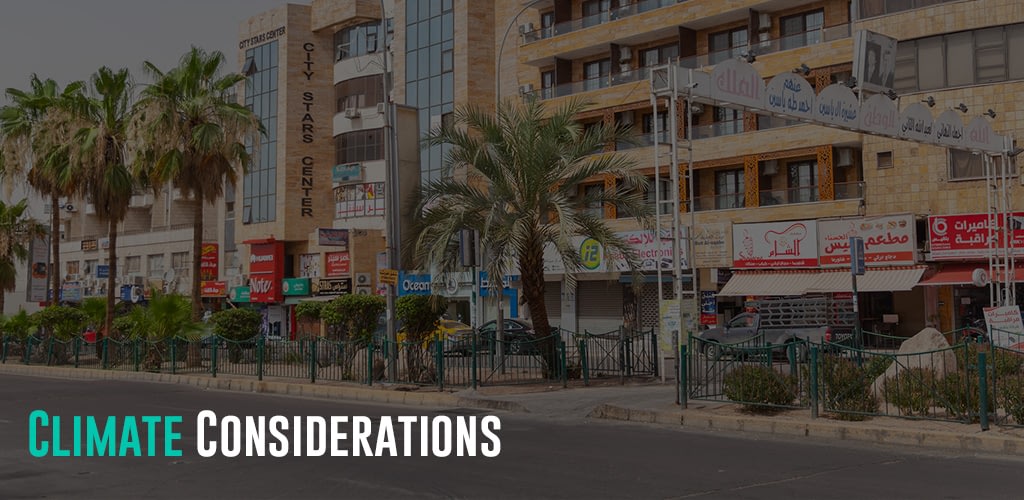
Jordan has a very diverse climate. Generally, temperature differences and precipitation decrease with increasing distance inland from the Mediterranean. A Mediterranean climate predominates in the highlands above the Jordan Valley, the Dead Sea, the Wadi Araba mountains, and the region south as far as Ras Al-Naqab. In contrast, the eastern and northeastern areas of the nation are covered in arid desert. Although the kingdom’s desert regions experience intense heat, the days are typically mild, with little humidity and a gentle wind.
Summer from May to September is hot and dry, with temperatures averaging around 32 °C and sometimes exceeding 40 °C between July and August. The winter from November to March is relatively cool, with temperatures averaging around 11.8 °C. Winter in Jordan also sees frequent showers and occasional snowfall in some western elevated areas.
Jordan has three distinct ecological zones. The Jordan Valley has warm winters of 19-22 °C and hot summers of 38-39 °C. Western highlands have relatively high rainfall, with temperatures from 9-13 °C in winter to 26-29 °C in summer. Lastly, the Badia region (inland east), which comprises 80% of the total land area, has arid and semi-arid climates ranging from 14-16 °C in winter and 35-37 °C in summer.
Primary Transportation Options
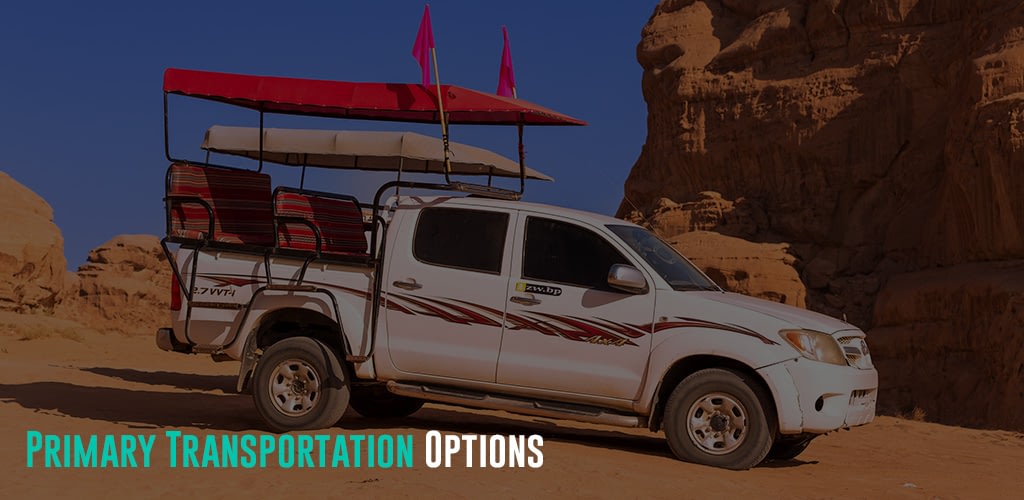
Jordan has a well-developed transportation network, including air, road, and very limited rail services.
Air
Queen Alia International Airport (QAIA) is Jordan’s key gateway to the world and the country’s aviation hub. Being a small country, flying within Jordan is not a common choice due to the availability of efficient road networks. Nonetheless, Royal Jordanian Airlines is the country’s flag carrier and operates daily flights between Amman and Aqaba. Other local airlines operating domestic flights are Jordan Aviation and Fly Jordan.
For sightseeing and aerial photography, travelers can also hire VIP Air Taxis from Golden Eagle Aviation Academy (GEAA).
Rail
Jordan does not have operational passenger train services except for occasional luxury train excursions on the Jordan Hijazi Railway. These are only rarely organized by international tour companies and steam enthusiasts. The historic Jordan Hijazi Railway is no longer in service for scheduled passenger transportation.
Car Rental
Due to the country’s well-developed road network, exploring Jordan by car is a practical and efficient option. Renting a car is affordable, with multiday rentals starting at approximately $35 daily for a regular car. Similarly, travelers can hire four-wheel-drive vehicles at $70, ideal for reaching remote archaeological sites and touring the desert.
Amman offers numerous car rental options, including both local and international agencies. Some of the global rental companies operating in major cities and tourist points are Hertz, Avis, and Europcar. For cycling enthusiasts, check out Bike Rush for bicycle rentals.
Jordan drives on the right side of the road, and drivers should possess a valid license from their home country. While renting a car provides flexibility, it’s advisable to be cautious, as road rules may be interpreted loosely, especially in cities.
Bus
Coaches and charter buses used in organized tours by companies are modern and air-conditioned. Its schedules can be obtained from hotel concierges or destination pages. For convenient travel from Amman to significant attractions, consider Jordan Express Tourist Transport (JETT), a leading and affordable transportation company offering trips to destinations like Petra and the Dead Sea. Travelers can also check out other tourist transport companies such as Alpha, Mesk, Philadelphia, Rum Trans, Sahara Kirresh, Smartway, and Sultan.
In addition to bus tourist transport, informal minibusses and shared taxis connect cities. However, they only depart when full. Timetables are uncommon, and waiting times for buses to fill up can be considerable. While city bus fares in Amman are as low as $0.60, longer trips to popular tourist sites may have slightly higher fares. Check out the Amman Bus portal for the bus routes and maps when planning your trip to the city.
Taxi
Taxis in Jordan, particularly the yellow ones, are a standard and relatively inexpensive mode of transportation. They are easily accessible from hotels or can be hailed on the street. There are also white “service taxis” with fixed routes in Jordan. Taxis have meters, but these may not be used late at night, so agreeing on the cost beforehand is advisable. Similarly, negotiation might be necessary for routes outside Amman.
In Amman, taxi fares start at $0.50, increasing by $1.05 per kilometer. Ensure the meter is on before the ride begins. As an alternative, travelers can hire taxis using the services of Petra Ride, Careem, and Uber apps, sometimes at lower prices.
Start Trip Planning
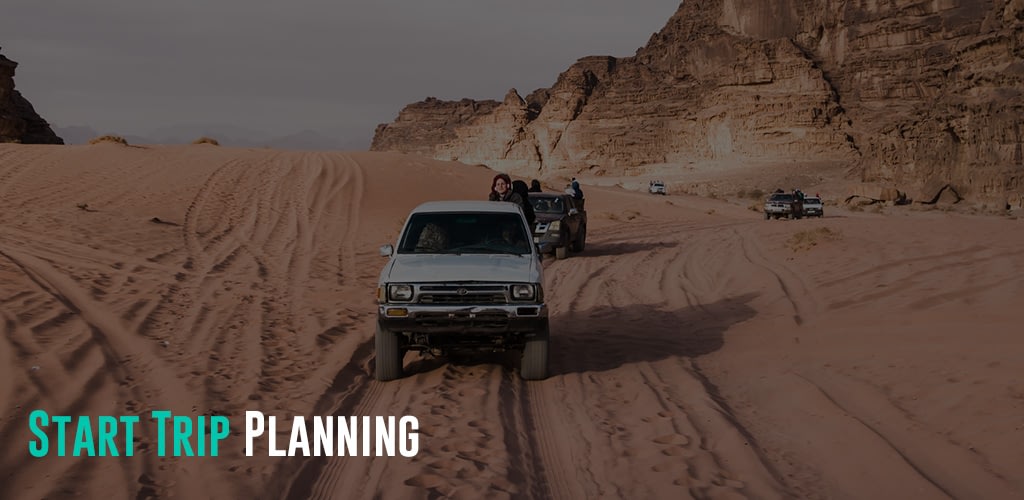
Travel-Wise is made from the ground up to help people travel more, break down the barriers that make it tough to get going, and start your journey as painlessly as possible. Bookmark our other Country Guides to help kick-start your research for future travels. We also offer templated itineraries from our staff and community that help serve as a building block for your trip plans. Alternatively, we also utilize AI to offer a way to generate itinerary ideas. This saves much time just getting you up and running with a template. From there, you can use the trip planner to create your customized itinerary, invite friends and family for collaboration, find others from Travel-Wise to join the trip, book and track important information, journal, and share your experiences at the end or along the way!

